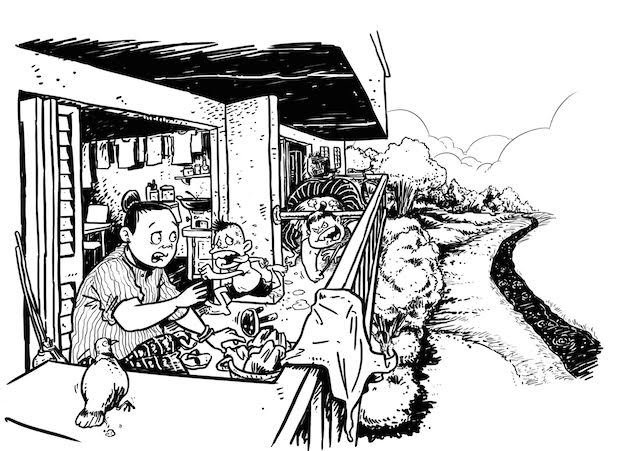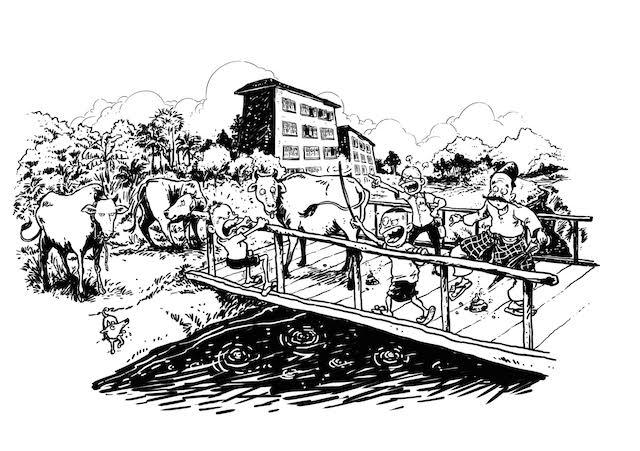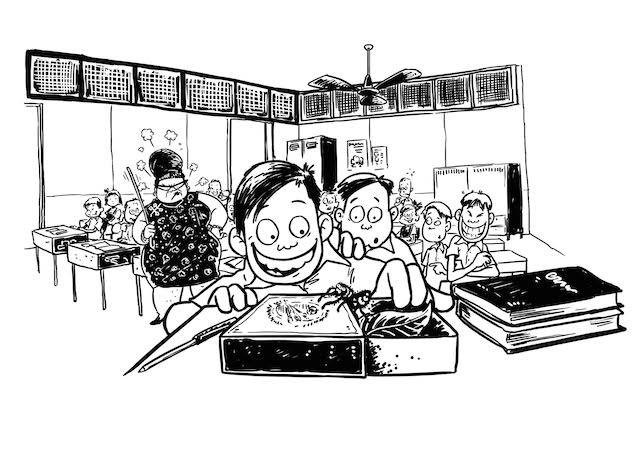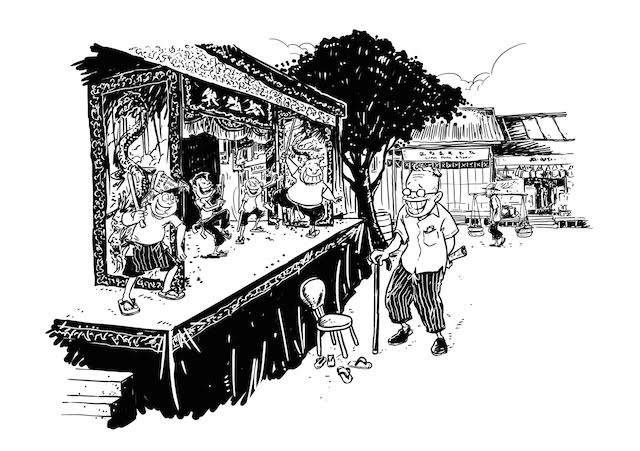Childhood memories of the ’60s
Co-creator of Mr Kiasu, James Suresh gives a glimpse of his childhood living in Queenstown so people can reminisce and see how far we have come.
Bestselling author and co-creator of comic icons such as Mr Kiasu and Kopi Tiam, James Suresh has written his latest book that gives a glimpse on what his life was in the heartlands in the 1960s. The book, supported by the SG Celebration Fund, is a recollection of childhood memories illustrated by his long-time friend Syed Ismail, who has illustrated his previous book – “When I Was in Uniform” and “On a Street in Singapore”.
Fifty-nine-year-old James who grew up in a rented flat in Queenstown (Singapore’s first satellite town) and went to Queenstown Primary School said, “When I tell my children that there were cows grazing on the grass outside my flat in Margaret Drive, they look at me with disbelief. I realised that there are many Singaporeans who may not know what life was like in the 60s.”
The book is divided into six sections including his neighbourhood such as the first neighbourhood cinema and community library, hawkers and tradesmen such as the ice ball man who sold drinks and ice ball, recreation such as hopscotch and marbles, significant events and experiences such as the Bukit Ho Swee fire and floods in the neighbourhood, public services and amenities such as hospitals and clinics, and iconic places in Singapore – past and present including River Valley swimming pool and Changi Beach.
James shared that during his time, there were no electronic gadgets, the Internet and endless TV programming, and so the kids spent many hours outdoors creating their own toys, climbing trees, exploring the forests, and catching fish from the drains.
“It gives older people a chance to reminisce and younger ones to see how far we have come,” he said. “The pictures are a starting point so people can further tell their stories.”
Dr Chia Su-Lu, MP for Tanjong Pagar GRC (Queenstown), the guest-of-honour at James’ book launch, said: “Records like this are invaluable.”
Some of the books will go to school libraries. He will also donate some books to his former primary school, secondary school and other institutions where he pursued his studies. Fifty copies will also be available to the public through a social media contest, which has yet to be announced. Books will not be available for public circulation until next year.
Here are some of the illustrations from his book:
Neighbour’s balcony – James remembered that due to the design of the flats, there was a single horizontal bar separating his family from his neighbour’s balcony. This allowed for him and his siblings to go over to his neighbour’s and for children to seek refuge from an angry mother with a cane.
Bridge across the river – Behind James’ block, there was a bridge across a river where residents would use to go to the market and provision shops on the other side. From his balcony on the fourth storey, he could see the “comings and goings of my neighbourhood” including seeing large herds of cattle and goats being led by cowherds and goatherds grazing along the riverbanks. Some of the cows would use the narrow bridge to get across the river.
Night soil collectors – Before the flush system in Singapore, there were night soil collectors, who came around to remove the full buckets of human waste from toilets and replace them with empty buckets. “The trucks were known as 36-door trucks because they usually had 36 compartments where the buckets would be stored,” said James in his book.
Spider fights in class – Boys would catch spiders, particularly the male ones, and keep them captive in a matchbox. There would spider fights usually in the classroom using the desk as the arena. As they would last no more than a minute or two, these fights could be arranged at short notice and when the teacher has left the classroom. The spider owners would face each other and release their spiders and coax them towards each other. Sometimes the fights would come to an abrupt end, as the teacher would appear unannounced.
End of the opera performances – Once the opera performances and 7th month festivities had ended, the stage would be left bare for a few days before workers came to dismantle them. The neighbourhood boys would take this time to choreograph their own fight scenes on stage and recall the scenes from the opera.
Neighbourhood provision shop – James shared that most of the provisions were bought in those days from the neighbourhood provision shop, which were usually run by the local Chinese and mostly family-owned businesses. There were no supermarkets in the ’60s except for Cold Storage and Fitzpatrick’s, which were patronised by the Europeans and rich locals. An interesting feature in the provision shops was the overhead cash tin where money was collected instead of in a cash register. The shopkeeper would pull the tin to deposit the money and it would bounce back when he let it go.
(** ILLUSTRATION CREDITS: Used with permission from the book “Singapore in the 60s”. Not to be used for any other purpose.)








0 Comments